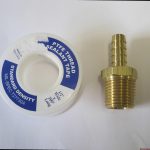Glue, that trusty adhesive we rely on for all our bonding needs, may not be as invincible as we think. Have you ever wondered what happens to glue when the temperature drops? In this blog post, we’ll dive into the captivating world of glue and uncover the secrets behind its performance in cold weather.
To understand how glue behaves in the cold, let’s start with the science. Glue is made up of a cocktail of chemical compounds that interact with each other and the materials they bond. This means that external factors, like temperature, can have a significant impact on its effectiveness.

When faced with chilly temperatures, glue undergoes some noticeable changes. As the mercury plummets, the liquid components of the adhesive become thicker and less able to flow smoothly. This lack of fluidity can make it harder for glue to fill gaps effectively and create strong bonds.
But that’s not all – cold weather also slows down the curing process of glue. The chemical reactions responsible for transforming liquid glue into a solid state take longer when it’s cold outside. So if you’re in a hurry to finish that project, you might find yourself waiting longer for your glue to dry and reach its full strength. In extreme cases, freezing temperatures can even prevent some glues from curing altogether, leaving you with weak or failed bonds.
And here’s another twist: different materials contract at different rates when exposed to cold temperatures. So when you use glue to bond materials with varying coefficients of thermal expansion, their contraction can put stress on the bond. This can lead to cracks, fractures, or complete detachment – definitely not what you want.
In conclusion, cold weather affects glue by thickening its consistency, slowing down curing time, and causing material contraction issues. While some glues are better equipped to handle low temperatures than others, it’s crucial to consider the specific requirements of your project. By understanding how temperature impacts adhesive strength, you can make smarter choices when using glue in chilly conditions. In the next sections, we’ll explore different types of glue and share some tips to maximize their effectiveness in the cold. So stay tuned.
What is Glue?
Contents
- 1 What is Glue?
- 2 How Does Cold Weather Affect Glue?
- 3 Tips to Mitigate Cold Weather Effects:
- 4 Impact of Cold Temperatures on Water-Based Glues
- 5 Impact of Cold Temperatures on Solvent-Based Glues
- 6 Storing Glue in Cool Environments
- 7 Warming Up Adhesive Before Application
- 8 Specialized Glues for Cold Weather Applications
- 9 Different Types of Glue and their Performance in Cold Weather
- 10 Conclusion
Glue, a remarkable adhesive substance, is a staple in arts and crafts, construction, and everyday household repairs. But what exactly is glue and how does it work? In this detailed exploration, we will delve into the science behind glue, examining its composition, various types, and the challenges it faces in cold weather conditions.
What is Glue and How Does it Work?
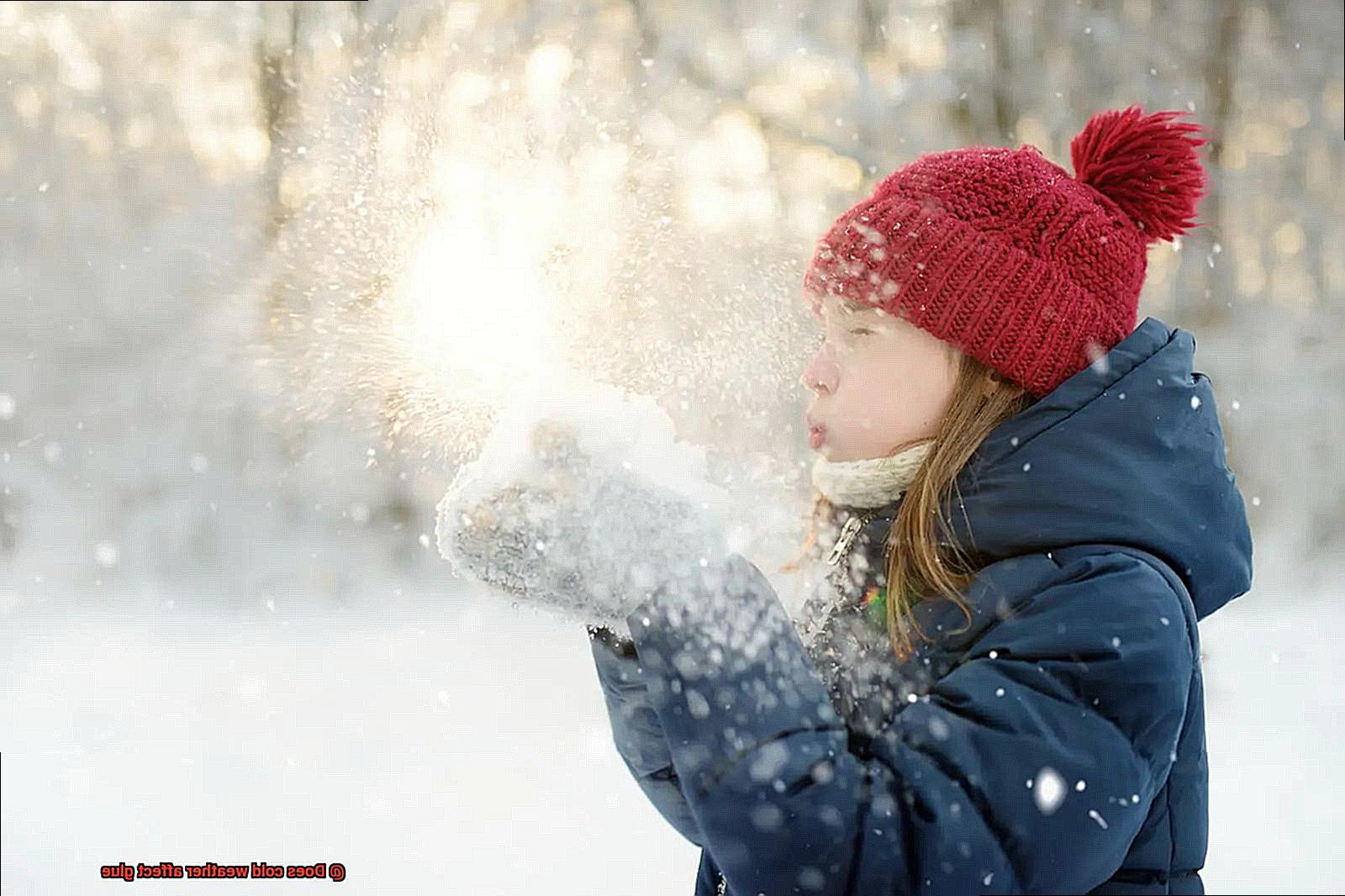
Glue is an adhesive substance that binds two surfaces together. It can take the form of a liquid, gel, or solid. The key component of glue is the adhesive itself, which forms intermolecular bonds with other materials. These bonds can be physical or chemical in nature, depending on the type of glue.
Types of Glue:
There are several types of glue available on the market today, each designed for specific materials and conditions. Some common types include cyanoacrylate glue (also known as super glue), epoxy glue, wood glue, and fabric glue. Each type has unique properties that make it suitable for diverse applications.
Glue’s Response to Cold Weather:
Cold weather poses challenges to the effectiveness and durability of glue due to changes in temperature that affect its composition. Water-based glues may freeze or become less viscous in low temperatures, compromising their ability to bond materials effectively. Solvent-based glues may experience slower solvent evaporation, resulting in longer drying times and weaker bonds.
Choosing the Right Glue:
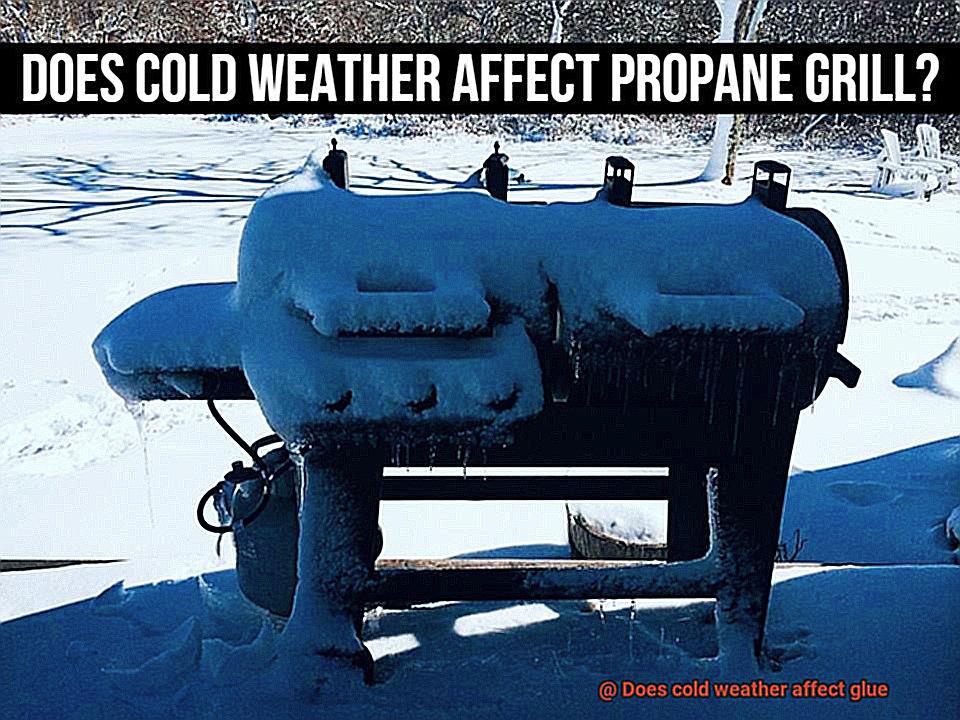
To ensure successful bonding in cold weather, it is crucial to choose the right type of glue for the specific application and environmental conditions. Some glues are specially formulated for cold weather use and contain additives to maintain their bonding properties even in low temperatures.
Tips for Using Glue in Cold Weather:
- Store glue in a cool environment: Prevent freezing or changes in viscosity by storing glue in a cool location.
- Warm up the adhesive before application: Improve the flow and bonding properties of glue by gently warming it up before use.
- Consider specialized cold weather glues: For applications in low temperatures, opt for glues specifically formulated to withstand cold weather conditions.
- Understand glue tolerance levels: Different glues have varying tolerance levels to cold weather, with some performing better than others. Research and choose accordingly.
How Does Cold Weather Affect Glue?
Glue, the remarkable adhesive that holds our world together, faces a formidable opponent in cold weather. In this comprehensive exploration, we’ll delve into the intricate relationship between low temperatures and various types of glue, from the resilient super glue to the versatile epoxy and hot melt adhesives.
Whether you’re an avid DIY enthusiast, a skilled craftsman, or simply intrigued by the science behind glue, this guide will offer valuable insights and practical tips for conquering cold weather challenges.
Cyanoacrylate Adhesive (Super Glue):
- Cold temperatures impede the evaporation of moisture required for bonding.
- Consequently, super glue may experience delayed setting times and form weaker bonds in frigid conditions.
Epoxy Glues:
- Optimal curing of epoxy resins relies on specific temperature ranges.
- Cold weather can prolong or hinder curing, leading to compromised bonds and adhesive failure.
Hot Melt Adhesive:
- Cold temperatures render hot melt adhesives more brittle and less flexible.
- Reduced flexibility increases the risk of cracking or breaking under stress.
Tips to Mitigate Cold Weather Effects:
Warm Up Before Bonding:
- Prior to applying glue, warm both the adhesive and the surfaces to be bonded using a hairdryer or by placing them in a warmer area.
- This ensures optimal curing conditions and enhances bonding performance in cold weather.
Specialty Cold-Weather Adhesives:
- Consider utilizing “all-weather” or “cold-temperature” adhesives specifically engineered to withstand colder conditions.
- These specialized adhesives possess enhanced curing properties and offer greater reliability in low temperatures.
Impact of Cold Temperatures on Water-Based Glues

Today, we delve into the world of water-based glues and uncover the effects of bone-chilling temperatures on their performance. Whether you’re a master crafter or a woodworking aficionado, understanding how cold weather affects your trusty adhesive sidekick is crucial for top-notch results. So, grab a steaming cup of cocoa, snuggle up, and let’s explore this frosty frontier.
The Freezing Point Predicament:
Picture this: when water freezes, it expands. This expansion weakens the bond between the glue and the surfaces it aims to unite, resulting in lackluster adhesive performance. No one wants their meticulously crafted project falling apart due to Jack Frost’s mischievous ways.
Consistency Conundrum:
Cold weather not only compromises the bond strength of water-based glues but also wreaks havoc on their consistency. As the temperature drops, the glue may thicken or form clumps, making it frustratingly challenging to apply evenly. We’ve all experienced those infuriating lumps in our projects – time to point the finger at the frosty weather.
Slow-Motion Drying:
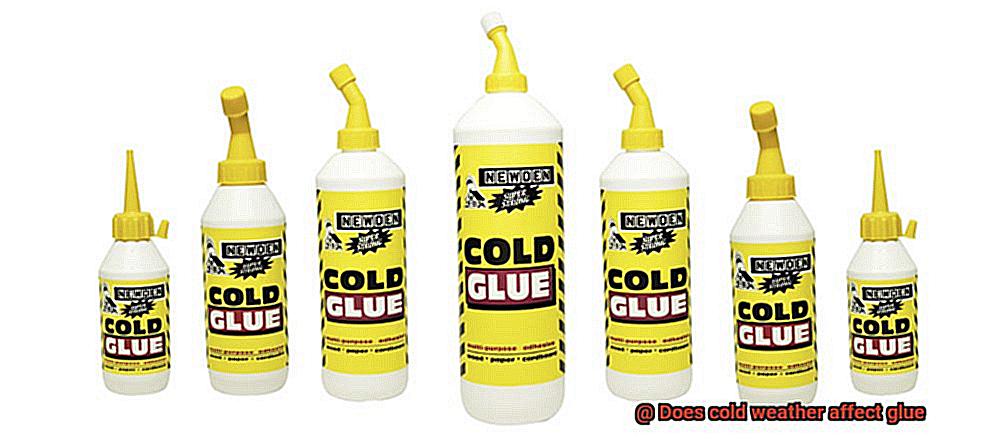
In frigid environments, water-based glues take longer to dry due to the sluggish evaporation process caused by low temperatures. This extended drying time can be a real productivity killer, especially for professionals who rely on quick-drying glues to keep their operations running smoothly.
The Frozen Fallout:
Prepare for the worst-case scenario: extremely low temperatures can inflict irreversible damage upon water-based glues. The freezing and thawing cycles can degrade adhesive properties, rendering the glue ineffective even after warming up. Talk about a frosty nightmare.
Mitigating the Cold’s Clutches:
Fear not, fellow glue warriors. There are ways to combat the impact of cold temperatures on water-based glues. Storing them in temperature-controlled environments, such as a cozy workshop or a climate-controlled storage area, is crucial for maintaining their effectiveness. If you find yourself working in chilly conditions, pre-warming the glue beforehand or using heat sources like heat guns or warmers can help improve its performance.
Manufacturer Matters:
Don’t forget to consult the manufacturer’s recommendations and guidelines. Different types of water-based glues may have varying tolerances to cold temperatures. Some formulations may even include additives that prevent clumping or loss of adhesive properties in freezing conditions. Following these instructions will ensure optimal results and keep your projects intact.
Impact of Cold Temperatures on Solvent-Based Glues
You may have experienced the frustrations that come with using solvent-based glues in cold weather. Fear not, for we have done the research to help you understand the impact of freezing temperatures on these glues and how to overcome the challenges they present.

The Battle with Cold:
Solvent-based glues are the go-to choice for various applications, including woodworking and construction. However, when exposed to cold temperatures, these glues face a formidable opponent.
The solvents within them become less effective and evaporate at a slower rate, leading to extended drying times. This can be problematic, especially if you’re working on time-sensitive projects where quick bonding is essential.
Thicker Glues and Weaker Bonds:
In sub-zero temperatures, solvent-based glues can become thicker and more viscous. Picture trying to spread peanut butter on bread straight from the fridge – it’s not an easy task. The same goes for applying glue in cold weather. The increased viscosity makes it challenging to achieve an even and smooth application, resulting in weaker bonds.

The Chilling Effect on Strength:
One of the most critical impacts of cold temperatures on solvent-based glues is compromised adhesive strength. With reduced solvent evaporation, the bond between surfaces becomes weaker. This can lead to decreased overall strength and durability of your glued assembly – definitely not what you want for your projects.
Physical Changes:
Extreme cold can cause physical changes in solvent-based glues. Some glues may even freeze or separate into different phases when exposed to freezing temperatures. This renders them unusable or ineffective, leaving you with a sticky situation.
Conquering Cold Weather Challenges:
To successfully battle the cold and ensure optimal performance of solvent-based glues, there are some precautions you can take.
- Proper Storage: Store your glue at room temperature before use to maintain its effectiveness.
- Warm Surfaces: Warming the surfaces being glued or using heat guns or heaters to raise the temperature of the environment can aid in faster drying and better bonding.
An Alternative Path:
If you find that your projects often take you into freezing temperatures, it might be worth considering alternative adhesive options. Cold-weather adhesives are specifically formulated to withstand low temperatures and provide reliable bonding, even in freezing conditions. These alternatives can be a game-changer for your cold weather projects.
Storing Glue in Cool Environments
Let’s dive deeper into the importance of keeping your favorite adhesive in a cool space.
One of the main reasons for storing glue in cool environments is to extend its shelf life. Glue is a versatile adhesive used in various industries and household applications, and proper storage can make a big difference in how long it remains usable. When exposed to high temperatures, glue can dry out or cure too quickly, rendering it ineffective. By storing it in cool environments, such as refrigerators or cold storage rooms, you can slow down the chemical reactions in the glue, allowing it to stay fresh and ready for use for a longer period.
However, it’s important to strike a balance when it comes to temperature. While cool environments are generally beneficial for most types of glue, subjecting them to extreme cold can be detrimental. Freezing temperatures can cause the glue to become thick, clumpy, or even solidify completely, making it unusable. Therefore, it’s crucial to avoid exposing your glue to freezing temperatures for an extended period.
To ensure optimal storage conditions for your glue, aim for an ideal temperature range of 50°F (10°C) to 70°F (21°C). Within this range, your glue will maintain its consistency and adhesive properties. Additionally, tightly sealing the containers is essential to prevent air exposure and moisture absorption, both of which can negatively impact the glue’s effectiveness.
It’s worth noting that different types of glue may have specific storage requirements. For example, wood glue or epoxy might be more sensitive to temperature variations and may require additional precautions or specific storage conditions. Always refer to the manufacturer’s instructions or guidelines for precise recommendations on storing different types of glue.
Warming Up Adhesive Before Application
Grab a steaming cup of cocoa and let’s dive into the fascinating world of adhesive warm-up.
When the temperatures plummet, adhesive can turn into a thick, gloopy mess that refuses to cooperate. Its curing process slows down to a snail’s pace, rendering it less effective at creating strong bonds between surfaces. But fear not, for there is a solution.
There are several ways to bring your adhesive back to life. One option is to use a heat gun, which gently warms up the adhesive to make it more pliable. Just be cautious not to go overboard with the heat, as excessive temperatures can ruin the adhesive or alter its properties. Another method involves placing the adhesive container in warm water for a few minutes, allowing it to reach a workable consistency. And for those who desire the utmost sophistication, there are heating pads designed specifically for this purpose.
Timing is crucial. Make sure to warm up your adhesive before applying it, giving it enough time to reach the desired temperature and consistency. Don’t forget to check the surface temperature too, as extreme differences can impact the bonding process.
Oh, and let’s not forget about storage. To maintain the adhesive’s effectiveness, keep it in a controlled environment at the recommended temperature range.
Specialized Glues for Cold Weather Applications
Well, fear not. There are specialized glues out there that are designed to withstand freezing temperatures and maintain their adhesive properties, even in the harshest of cold conditions.
One popular type of specialized glue for cold weather applications is cyanoacrylate adhesive, otherwise known as super glue. This incredible glue is renowned for its quick bonding properties, and certain formulations have been specifically designed to work in low temperatures. So whether you’re repairing a broken ornament in the dead of winter or fixing a shoe sole on a chilly day, super glue has got your back.
But that’s not all. Another type of specialized glue that can withstand cold temperatures is epoxy adhesive. Epoxy adhesives are well-known for their strength and durability, and some formulations are specifically formulated to work well in cold conditions. So if you’re working on an outdoor project during the winter months, epoxy adhesive will be your trusty companion, holding everything together with ease.
And let’s not forget about silicone-based adhesives. These remarkable glues have excellent adhesion properties and can maintain their performance even in freezing temperatures. So whether you need to seal a window frame or repair a leaky pipe during the coldest of winters, silicone-based adhesives will come to your rescue.
When selecting a specialized glue for cold weather applications, there are a few factors to consider. First and foremost, think about the temperature range you’ll be working in. Make sure the glue you choose is suitable for those temperatures. Additionally, consider the materials you’ll be bonding together and the desired strength of the bond. Different glues have different strengths and may work better with certain materials.
It’s important to note that while specialized glues for cold weather applications can withstand low temperatures, they may have limitations in extremely cold conditions. Always check the manufacturer’s recommendations and test the glue in the intended temperature range before finalizing any application.
Different Types of Glue and their Performance in Cold Weather
As Jack bravely attempted to construct a snowman in the midst of a bone-chilling winter, he quickly discovered that his customary glue was no match for the frigid weather. Sadly, the snowman repeatedly collapsed. This unfortunate incident taught Jack the importance of selecting the right glue for cold weather applications. In this article, we will delve into the diverse types of glue and their performance in icy temperatures.
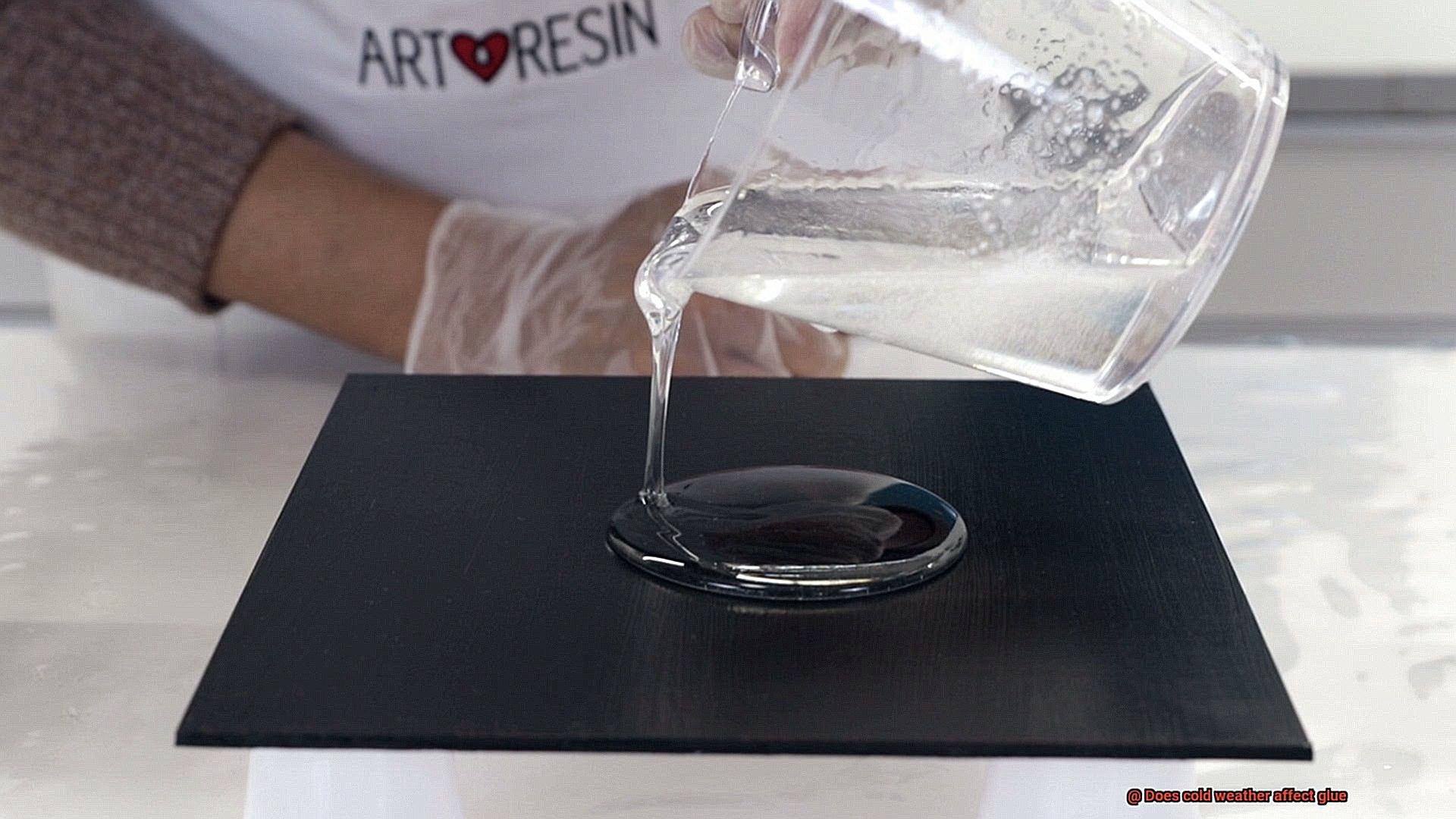
Epoxy Resin Glue: The Warrior of Winter
In the realm of cold weather, epoxy resin glue reigns supreme. Like a valiant knight, it remains unyielding in freezing temperatures, retaining its adhesive strength. This remarkable glue is perfect for bonding metal, wood, or plastic in frosty climates. So, whether you’re constructing an intricate ice sculpture or mending a broken sled, be sure to reach for the powerful epoxy resin glue.
Polyurethane Glue: The Indomitable Adhesive
Another formidable contender in the battle against cold weather is polyurethane glue. With its exceptional bonding capabilities, it can unite an array of materials ranging from wood to concrete, all while maintaining its strength in freezing conditions. Whether you’re repairing outdoor furniture or erecting an igloo, polyurethane glue will be your unwavering companion.
Super Glue: The Mighty Mender
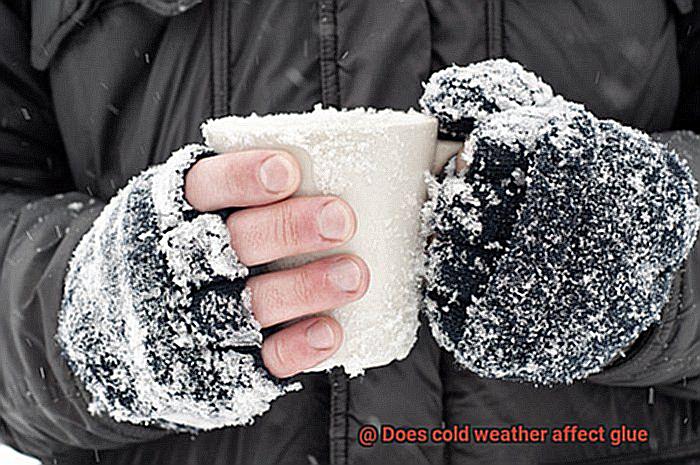
When it comes to swift repairs in cold weather, super glue is your trusted sidekick. With its instantaneous bonding power and unwavering strength, it is ideal for fixing small mishaps or adhering materials exposed to wintry temperatures. Ensure you have a tube of super glue within reach for those unforeseen winter emergencies.
White and Yellow Carpenter’s Glue: Beware of Freezing Temperatures
Unlike our winter warriors, traditional carpenter’s glue does not fare well in freezing temperatures. These water-based glues have a tendency to freeze, weakening their adhesive properties. If you are embarking on a cold-weather project involving wood, it is advisable to opt for specialized wood glues that are designed to withstand chilly conditions.
Consider Your Materials and Surfaces
Remember, not all glues are created equal, particularly when it comes to cold weather applications. Certain glues are more suited for specific materials or surfaces. For instance, if you are bonding metal in freezing weather, seek out a specialized metal adhesive to ensure a sturdy bond that can withstand the cold.
Also Read: How to Make Glue Dry Faster
Conclusion
In conclusion, it is evident that cold weather does indeed have an impact on glue.
When exposed to low temperatures, the adhesive properties of glue tend to weaken, resulting in reduced bonding strength. This can be particularly problematic in certain applications where a strong bond is crucial for durability and reliability.
The cold weather causes the glue to become less viscous, making it harder to apply and decreasing its ability to adhere properly. Additionally, freezing temperatures can cause the glue to become brittle and prone to cracking or breaking under stress.
Therefore, it is essential to consider temperature conditions when using glue, especially in colder climates or during winter months.



